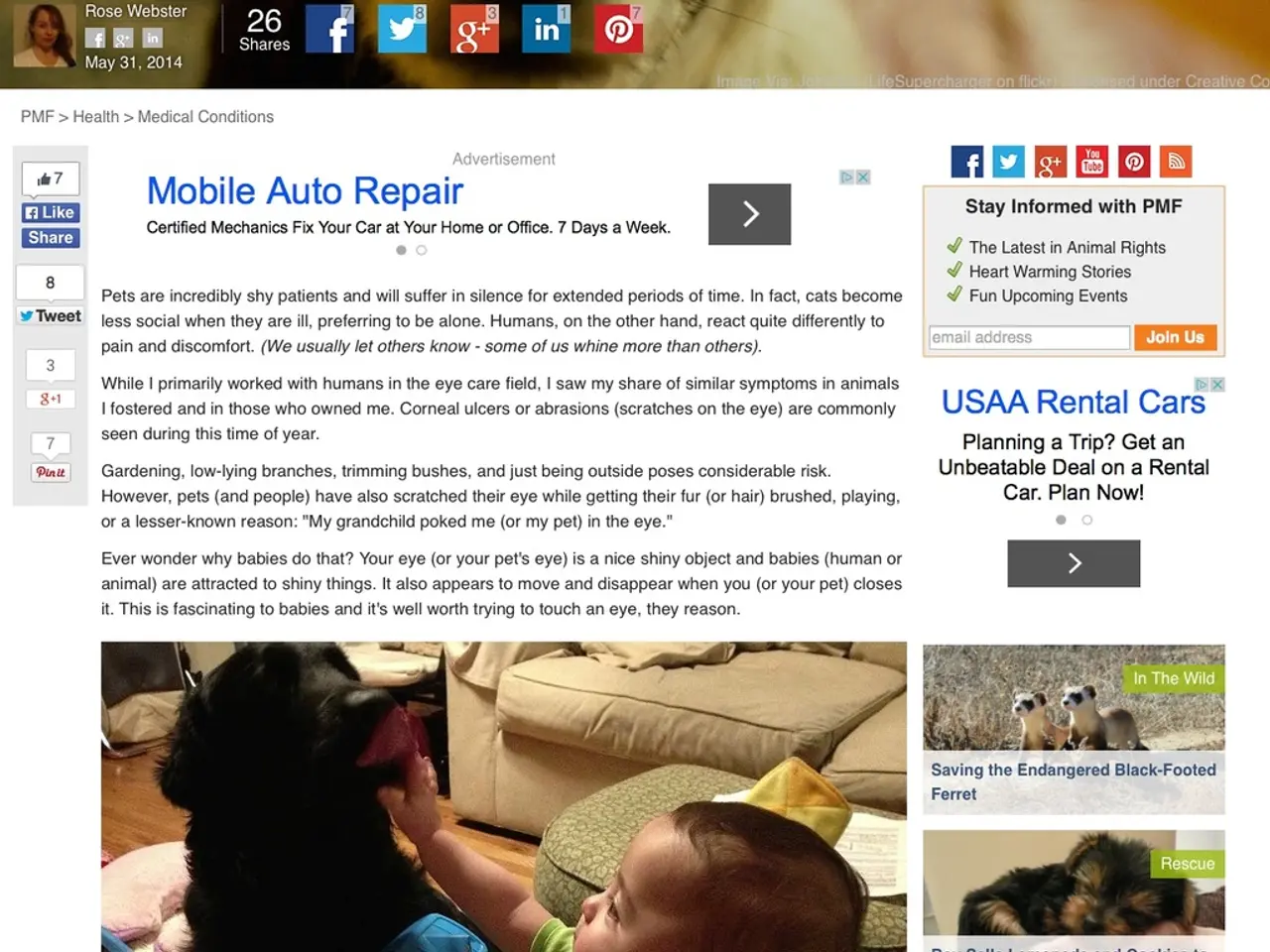Symptoms, causes, diagnostic methods, and available treatments for Spina Bifida, a congenital defect affecting the development of the spinal cord and vertebrae.
Myelomeningocele, the most severe form of spina bifida, is a congenital neural tube defect that affects the spinal cord and nerves, leading to severe physical impairments. This condition arises due to improper closure of the spinal column during embryonic development, exposing the spinal cord and nerves, and causing damage[1][4].
### Symptoms and Diagnosis Babies with myelomeningocele often exhibit symptoms such as muscle weakness or paralysis in the lower body, particularly affecting the feet, hips, and legs. Problems with bowel and bladder control, an unusually large head due to hydrocephalus, a bulging soft spot on the top of the head, and other signs like a dimple or unusual patch of hair on the back may signal the presence of the defect[1].
The Maternal serum alpha-fetoprotein (MSAFP) test, a blood test that assesses for a protein produced by the fetus, can help identify high AFP levels, which may indicate a neural tube defect like spina bifida[6].
### Treatment Options There is no cure for myelomeningocele, but treatment focuses on managing symptoms and preventing complications. Surgical intervention is critical, with surgery often performed within days after birth to close the spinal defect and reposition the spinal cord. In some cases, surgery may be done prenatally (while the baby is still in the womb)[1][5].
Ventricular shunting surgery may be required to treat hydrocephalus by diverting excess fluid from the brain to the abdomen, preventing pressure buildup[5]. Physical therapy and other supportive therapies help improve strength, balance, and mobility[1].
Emerging treatments, such as stem cell therapy, have been explored to improve neurological function through injections of umbilical cord-derived stem cells combined with physical therapy. This aims to regenerate damaged neural tissues but remains an advanced and investigational approach[3].
Medications may be used to prevent seizures, infections, and help with urinary issues as part of comprehensive management[5]. Children with myelomeningocele often require multidisciplinary care involving neurosurgeons, physical therapists, urologists, and other specialists for lifelong management of motor, sensory, and sphincter dysfunctions[2][5].
### Living with Myelomeningocele Children with myelomeningocele may face cognitive symptoms, such as problems with awareness, thinking, learning, judging, and knowing. They may also require additional support, such as special diets, toilet training techniques, and surgery for bowel incontinence[7]. If hydrocephalus is present, it increases the chance of learning problems[8].
In some cases, treatments like an antegrade continence enema (ACE), colostomy or ileostomy, artificial urinary sphincter (AUS), or anal plugs may be recommended to manage bowel or urinary incontinence[7][8].
### Prevention Folic acid is essential for preventing spina bifida, and females should consume a daily intake of folic acid during their reproductive years. Pregnant or trying-to-be-pregnant females should take a 400 mcg folic acid supplement daily[9]. Undergoing tests for neural tube defects and other problems during pregnancy can reduce the risk and enable people to take early action[10].
In conclusion, managing myelomeningocele requires a comprehensive approach that includes surgical intervention, supportive therapies, and emerging treatments. Early detection and intervention can significantly improve the quality of life for those affected by this condition, and ongoing research continues to provide hope for new and improved treatments.
- Managing chronic health conditions like myelomeningocele might require treatments such as colostomy or ileostomy for issues with bowel incontinence.
- As myelomeningocele is often associated with neurological disorders and cognitive symptoms, health-and-wellness approaches might involve additional support like special diets and toilet training techniques.
- In an attempt to prevent spina bifida and other neural tube defects, science emphasizes the importance of a daily folic acid intake for women during their reproductive years, and recommends CBD (a type of supplement derived from cannabis) for managing seizures and other complications arising from such medical-conditions.




